Kaizen - Kaizen principle, Kaizen methods & importance for companies
In a world where markets are changing rapidly and competition is more intense than ever, organizations are looking for effective methods to remain...
Modular pipe systems
Attachments
6 min read
![]() Jens Walter
:
24.Juli.2023
Jens Walter
:
24.Juli.2023
At a time when companies are striving to increase efficiency and cut costs, the concept of lean management has established itself as a highly successful method. Lean, also known as "lean manufacturing" or "lean management," is an approach that aims to reduce waste and maximize value for customers.
In this blog article, we will provide an introduction to the concept and explain its basic principles and benefits.
Note: With the help of artificial intelligence, we have converted our blog article into a video format quickly and easily. We would like to orient ourselves on the "lean" idea, develop it further and find out how many of our readers prefer a video. Please let us know your opinion (anonymously) using the red feedback button on the right-hand side.
Lean is a concept of lean management that aims to minimize waste while maximizing value for the customer. It was originally developed by Toyota / in the Toyota Production System (TPS) and has since spread to various industries and companies worldwide.
At its core, Lean is about designing all of a company's activities, processes, and resources to focus on creating value for the customer. This involves eliminating waste in the form of unnecessary costs, wasted time, overproduction or errors.
The basic principles of Lean are based on the pursuit of continuous improvement and the use of methods such as Kaizen (continuous improvement process) and PDCA (Plan-Do-Check-Act). Lean focuses on achieving efficient and error-free production and maximizing customer value.
_web.jpg?width=600&height=400&name=Beewatec-3-(54)_web.jpg)
A central aspect of Lean is the:
By implementing Lean, companies can achieve numerous benefits, including increased efficiency, cost reduction, improved product quality, increased customer satisfaction, and a competitive advantage.
Advantages and disadvantages of Lean >
Lean management and lean production are two closely related concepts that aim to minimize waste and maximize value for the customer. Here is a simple explanation of both concepts:
Lean management is a business philosophy and management approach that aims to reduce waste, optimize processes and promote constant improvement in all areas of the company. It is based on the principle that every employee is capable of identifying problems and suggesting improvements. Lean management fosters a culture of commitment, teamwork and constant learning.
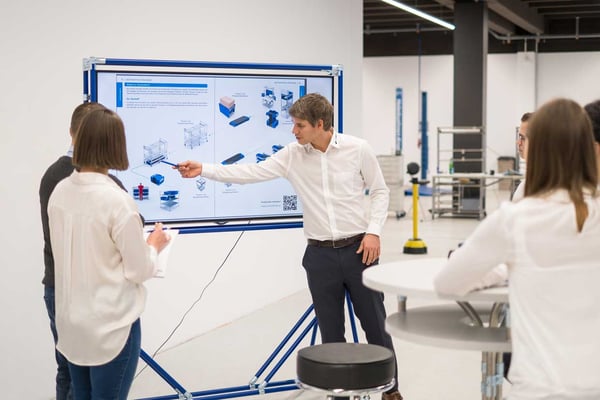
The basic principles of Lean Management include:
Lean production, also known as lean production system, refers specifically to the application of lean principles in production. It aims to minimize waste in the form of overproduction, inventory, waiting time, transportation, and other aspects to achieve efficient and flexible production.
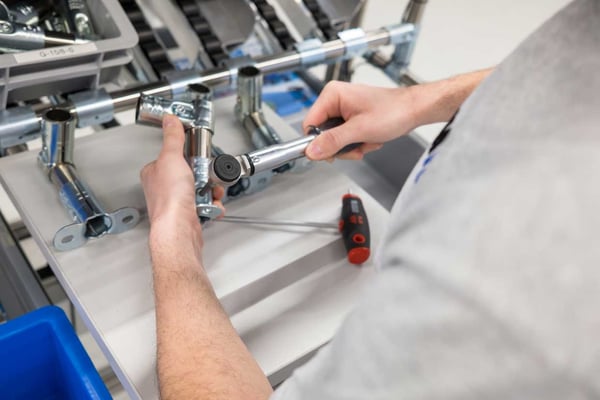
The characteristics of Lean Production include:
With the help of a value stream analysis, clues for optimization (= bottlenecks, wastes such as waiting times) and design of the entire production processes can be identified. The focus here is on the analysis of material flow and information flow. Both aspects play a central role in the "Production System" and must be harmonized holistically.
There are a variety of lean methods that can help companies implement the lean concept. Here are some of the most popular lean methods:
There are several lean principles that help companies implement the lean concept.
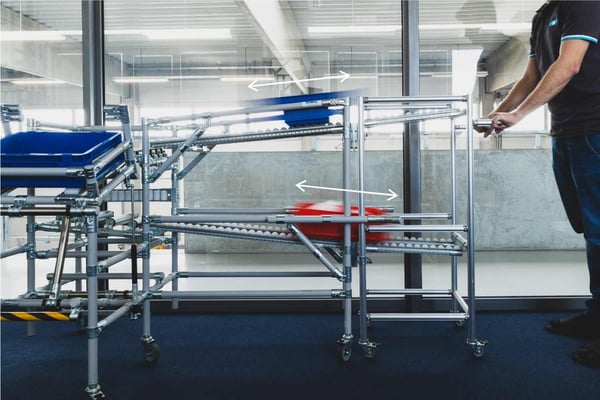
Here are the most important lean principles and what to look for when applying them:
When implementing lean principles, it is important that the entire organization, including management and employees, develop a shared understanding of and commitment to lean principles. Involving and training all employees, as well as reviewing and adapting lean initiatives, is critical to success.
Lean offers companies a variety of benefits, but there are also some potential drawbacks. Here are the main advantages and disadvantages of lean, as well as reasons why companies should invest in lean:
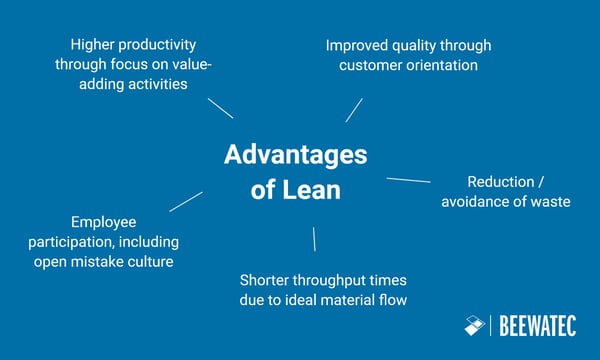
BeeWaTec offers innovative and flexible solutions for workplace design, storage and in-plant material flow. We work closely with our customers to develop optimal solutions and meet every requirement.
"We don't just sell components, we sell lean!" - Joachim Walter, CEO of the BeeWaTec Group
Our modular system of pipe racking system is the optimal solutions to implement the "Lean Concept" quickly, flexibly and cost-efficiently in our own production and value creation. The overriding goal of our customers is always to identify processes and harmonize processes. Through the flexibility and adaptability of our lean operating equipment, we also ensure flexibility and competitiveness in the future.
_Web.jpg?width=600&height=400&name=Beewatec042018-(31)_Web.jpg)
Lean is an extremely valuable philosophy and methodology to help companies optimize their processes, minimize waste, and maximize customer value.
By applying lean principles such as value orientation, value stream mapping, flow orientation, pull principle, and continuous improvement, companies can achieve a variety of benefits.
By implementing lean, companies can increase productivity, improve the quality of their products and services, reduce costs, shorten delivery times, and achieve high customer satisfaction. In addition, Lean fosters a culture of employee engagement, resulting in a positive work environment and increased employee engagement.
In an increasingly competitive and ever-changing business environment, companies should invest in Lean to strengthen their competitiveness and respond flexibly to new needs and demands.
As one of the leading providers of lean equipment manufacturing and lean production, we support you with hardware and know-how. Discover the possibilities of our modular system and benefit sustainably from more flexibility.
In our showroom you will find many clever solutions and successful projects. Use our experience for your process design. We will be happy to support you.
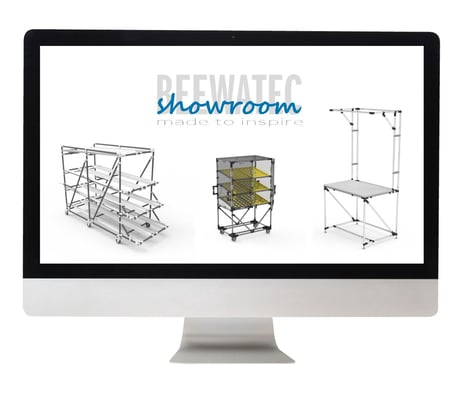
In a world where markets are changing rapidly and competition is more intense than ever, organizations are looking for effective methods to remain...
At a time when companies are striving to increase efficiency and cut costs, the concept of lean management has established itself as a highly...
The material flow is an important part of every production and logistics. It describes the physical movement of materials, products and goods through...